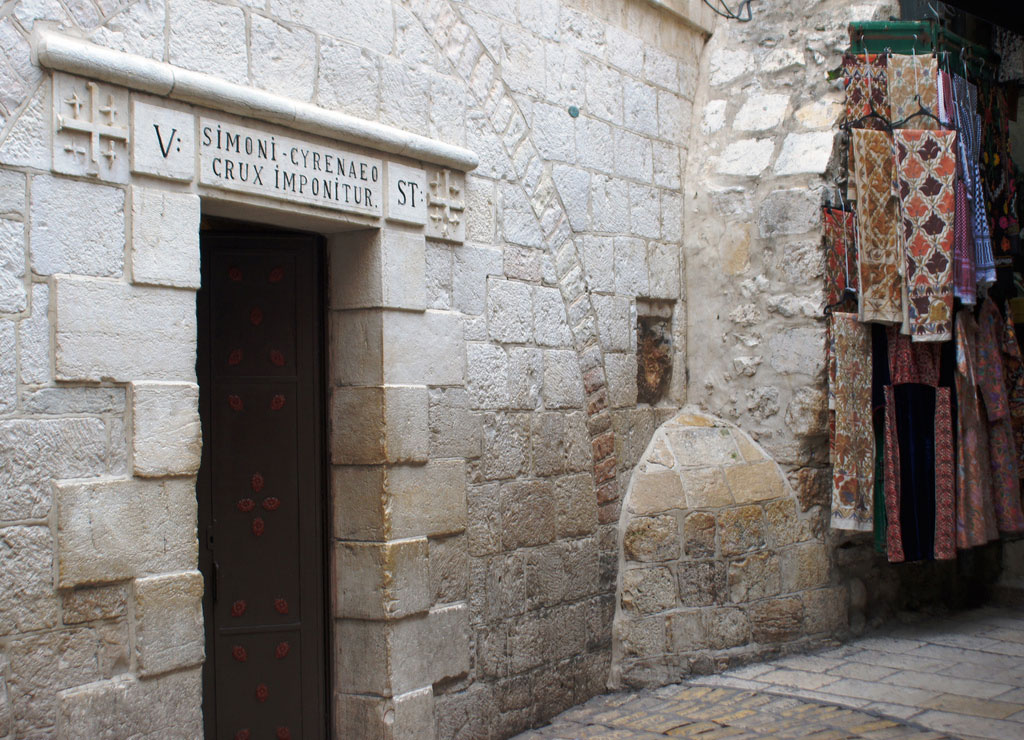Via Dolorosa: Following the Last Steps of Jesus
TIME : 2016/2/16 14:59:15

The old square stone here is said to bear the handprint of Jesus. Photo © Michael Panse, licensed Creative Commons Attribution No-Derivatives.
Via Dolorosa is a numbered trail that winds through the Old City, marking locations of significant moments during Jesus’ journey bearing the cross he was crucified on. It begins in the Muslim Quarter and ends in the Christian Quarter, and pilgrims frequently kneel in prayer at different stations.
A free MP3 audio file and map of the trail from the Jerusalem Development Authority can be downloaded. You can also join the Via Dolorosa procession led by the Franciscans on Fridays at 3pm from Station 1.
- Station 1: Just inside the Lion’s Gate and marked with a round, black seal imprinted with the Roman numeral I on the wall of the street is the former seat of Pontius Pilate, who condemned Jesus to death. The station is located at the northwest corner of Temple Mount.
- Station 2: Across the street is the Roman numeral II. Here Jesus was given his cross, whipped, and mockingly dressed in a robe and given a crown of thorns by Roman soldiers. The compound includes the Roman Catholic Church of the Condemnation and the Convent of the Flagellation.
- Station 3: The corner of Via Dolorosa and El Wad (Hagai) Street is station 3 and marks where Jesus fell under the weight of the cross for the first time. The route then traces the western side of Temple Mount. The Polish Catholic church, the Austro-Hungarian Hospice (a hospital), and a 15th-century chapel are nearby.
- Station 4: On El Wad Street is the Roman numeral IV, where Jesus met his mother, Mary. Between stations 3 and 4 is a short section of the Roman-Byzantine street, which was paved over the same street that Jesus walked on.
- Station 5: At the corner where El Wad Street meets up again with Via Dolorosa is the Roman numeral V. A small Franciscan church built in 1229 marks the location where Simon bore the cross for Jesus. An old square stone to the right of the door of the church is said to bear the handprint of Jesus.
- Station 6: Uphill is the Roman numeral VI and the station where a woman named Veronica wiped the face of Jesus. A small Greek chapel at the site is called The Holy Face.
- Station 7: The Roman numeral VII marks where Jesus fell for the second time. Behind the black doors is a small chapel. Just beyond a massive Roman column is the Chapel of the Seventh Station.
- Station 8: Close to the Church of the Holy Sepulchre, marked with the Roman numeral VIII, this station is also marked by a stone embedded in the wall with the engraving IC-XC NI-KA , which means “Jesus Christ conquers.” The Greek Orthodox Church dedicated the station to Saint Charalampos and built a monastery behind the wall. This is where Jesus spoke to the women of Jerusalem and told them not to weep for him, but for themselves and their children.
- Station 9: A cross painted on a stone pillar next to stairs and an archway is where Jesus fell for the third time. Adjacent to the Church of the Holy Sepulchre, the route here winds around the building of the Coptic Patriarchate. Nearby is the Ethiopian Church of St. Michael and a Coptic church with paintings depicting Biblical scenes.
- Station 10: At the entrance of the Holy Sepulchre is the Chapel of the Franks, where Jesus was stripped of his clothes.
- Station 11: The interior of the Church of the Holy Sepulchre where Jesus was nailed to the cross is station 11.
- Station 12: A Greek Orthodox crucifixion altar inside the church marks where Jesus was crucified and died on the cross. A silver disk with a central hole under the altar marks where the cross stood, and pilgrims can be seen kneeling and kissing it.
- Station 13: A large stone where the body of Jesus is said to have been laid and prepared for burial after he died is encased with the top open for pilgrims to touch.
- Station 14: The tomb of Jesus and the final station of the Via Dolorosa is in the rotunda inside a small inner chamber past the Chapel of the Angel. A marble lid covers the tomb.
Excerpted from the First Edition of Moon Jerusalem & the Holy Land.
